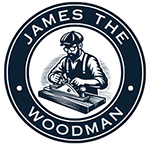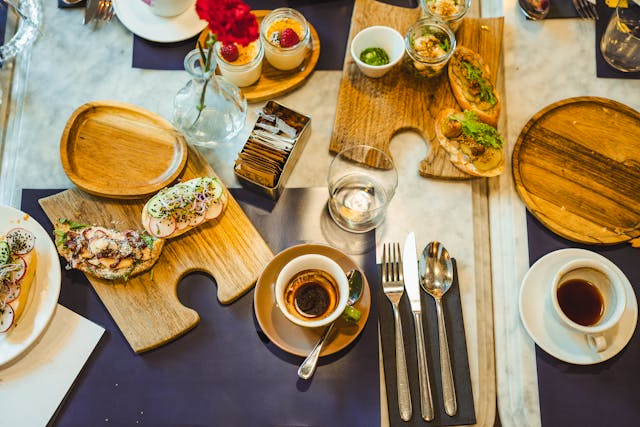When choosing a cutting board, one of the most important factors to consider is the type of wood used. A cutting board is a kitchen essential, used daily for slicing, dicing, chopping, and preparing food. While plastic and bamboo boards are popular alternatives, wooden cutting boards are often preferred by chefs and home cooks alike for their durability, gentle effect on knives, and aesthetic appeal. However, not all wood types are created equal when it comes to cutting boards. Some woods are too soft, too porous, or simply unsuitable for kitchen use. This article explores the best types of wood for cutting boards, explains why certain woods are better than others, and helps you make an informed decision based on your cooking needs.
Characteristics of a Good Cutting Board Wood
Before diving into specific wood types, it’s important to understand what makes a wood species ideal for cutting boards. The three primary factors to consider are hardness, porosity, and toxicity.
Hardness: A good cutting board should be hard enough to withstand repeated knife strikes without deep scoring, but not so hard that it dulls the blades quickly. The Janka hardness scale is used to measure the hardness of wood; ideal woods for cutting boards typically fall in the mid-range.
Porosity: Low-porosity woods are less likely to absorb liquids, bacteria, and food particles. This is crucial for hygiene and longevity. Open-grained woods such as oak are less ideal because they can harbor moisture and bacteria in their pores.
Toxicity: Some exotic woods contain oils or compounds that may be toxic or cause allergic reactions. It is important to choose food-safe, non-toxic wood species.
Maple: The Industry Standard
Hard maple, also known as sugar maple or rock maple, is widely regarded as one of the best woods for cutting boards. It has a Janka hardness rating of about 1,450, placing it in the ideal range for both durability and knife-friendliness.
Maple is also a closed-grain wood, which means its pores are small and less likely to trap bacteria or moisture. This makes it hygienic and easy to clean. In addition, maple has a fine, even texture and a light color that looks clean and professional in any kitchen.
Because of its balance of hardness, hygiene, and availability, maple is commonly used for commercial-grade cutting boards and butcher blocks.
Walnut: A Premium Choice
Walnut is another excellent option for cutting boards, especially for those looking for a darker, more elegant appearance. With a Janka rating of around 1,010, walnut is softer than maple but still hard enough to be durable. Its moderate hardness means it is gentle on knives and less likely to dull them over time.
Walnut is also a closed-grain wood, making it a hygienic option. Although slightly more porous than maple, it is still considered food-safe and does not absorb moisture easily if properly maintained.
Due to its rich brown to purplish hues, walnut cutting boards are favored for their visual appeal. However, walnut tends to be more expensive than maple and may show knife marks a bit more readily.
Cherry: Aesthetic and Functional
Cherry wood is known for its warm, reddish tone and smooth texture. It has a Janka hardness rating of about 995, placing it in a similar range as walnut. While slightly softer than maple, cherry still offers decent durability for everyday kitchen use.
Cherry is a closed-grain wood and naturally resists moisture and bacterial growth. Like walnut, it is gentle on knives and develops a beautiful patina over time with regular use and proper care.
Although cherry boards may require more maintenance than harder woods, they are popular for their appearance and balance of function and style.
Teak: Durable and Water-Resistant
Teak is a tropical hardwood known for its exceptional durability and resistance to water. With a Janka hardness of around 1,070, teak is hard enough to stand up to frequent use. Its high oil content makes it naturally water-resistant, which helps prevent cracking and warping over time.
However, this same oiliness can pose challenges. The natural oils in teak can be slightly abrasive on knives and may interfere with food-safe finishes. Additionally, teak contains silica, a mineral that can dull blades faster than other woods.
Despite these concerns, teak is still a popular choice for cutting boards, particularly in humid climates where water resistance is important.
Beech: Affordable and Reliable
Beech is a European hardwood often used in kitchen tools and furniture. It has a Janka hardness of about 1,300, making it similar to maple in terms of durability. Beech is also a fine-grained wood with good resistance to moisture and bacterial contamination.
One downside of beech is that it can be prone to warping if not properly maintained. Regular oiling and proper drying are essential to preserve its shape and prevent cracking.
For those seeking a reliable cutting board at a lower price point, beech offers a good balance of performance and affordability.
Woods to Avoid
Not all woods are suitable for cutting boards. Open-grained woods like oak, ash, and elm are more porous and can harbor bacteria, even with regular cleaning. Similarly, softwoods like pine and cedar are too soft, making them prone to deep knife grooves and splintering.
Additionally, many exotic woods such as purpleheart, wenge, or padauk contain oils or chemicals that may be toxic or allergenic. These woods, while beautiful, should generally be avoided in food preparation surfaces unless thoroughly researched and finished by an expert.
End Grain vs. Edge Grain
Beyond the type of wood, the construction of the board also plays a role in performance. There are two common construction styles: end grain and edge grain.
End grain boards are made by fusing the ends of wood pieces together, resulting in a checkerboard pattern. These boards are more knife-friendly because the blade slices between wood fibers rather than across them. They also self-heal better and show fewer knife marks. However, end grain boards are more expensive and heavier.
Edge grain boards are made by aligning long boards side by side, creating a striped appearance. They are more affordable and easier to produce, but may show wear more quickly than end grain boards.
Maintenance and Care
Regardless of the type of wood, proper maintenance is key to prolonging the life of your cutting board. Wooden boards should be hand-washed with mild soap and dried immediately. Never submerge them in water or run them through a dishwasher. Regular oiling with food-grade mineral oil helps maintain moisture balance and prevents cracking.
Sanitizing with a diluted vinegar solution or sprinkling coarse salt and rubbing with a lemon can help remove odors and bacteria naturally.
Take me to the Cutting Boards!
Choosing the right wood for your cutting board is essential for functionality, safety, and durability. Hard maple stands out as the industry standard due to its hardness, fine grain, and hygienic properties. Walnut and cherry provide excellent alternatives with rich aesthetics and good performance. Teak offers durability and water resistance, while beech is a practical budget option. Avoid open-grain and exotic woods that pose hygiene or toxicity risks.
By understanding the characteristics of each wood type and maintaining your board properly, you can ensure a long-lasting and effective tool that enhances your cooking experience.

